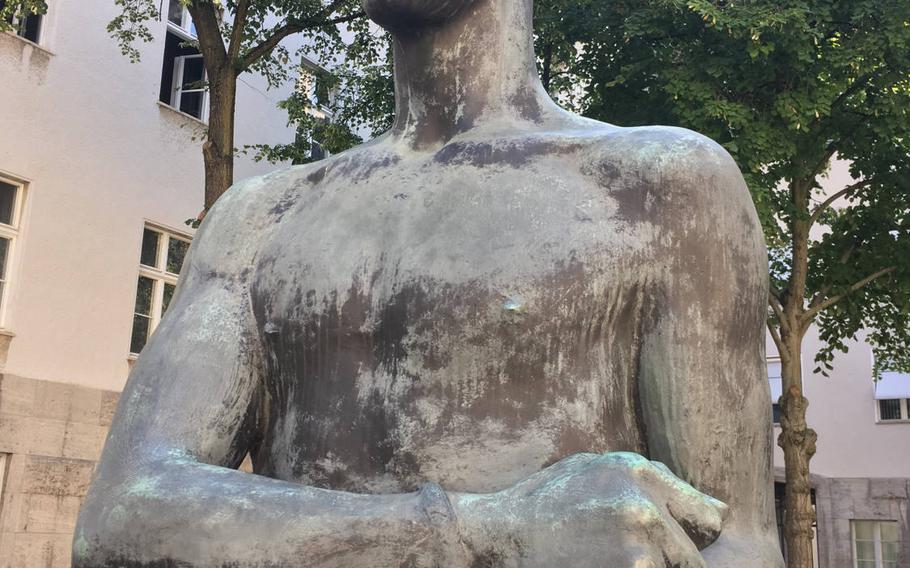
The German Resistance Memorial Center in Berlin honors Germans who fought against the Nazi regime. (J.P. Lawrence/Stars and Stripes)
In an unassuming building in the capital city of Berlin, there is a museum dedicated to those in Germany who risked and lost their lives resisting the Nazis.
The German Resistance Memorial, which was recently modernized, provides a rare glimpse into the lives of the artists, labor unionists, military officers and other dissidents who fought against Adolf Hitler from 1933 to 1945.
On one floor is the Silent Heroes Memorial Center, a recent addition dedicated to those who hid or supported persecuted Jews. Some of these stories end with everyone surviving the war, but many do not.
Especially harrowing is the realization that for those few willing to help, there were many more willing to inform on their neighbors, as Alice Nickel, a German Jew, recalled: “I found lodgings with people whom I never would have expected to show a willingness to help. I also experienced rejection from people who in better times I had considered my best friends.”
Some of the most famous items on display are the lists of businessman Oskar Schindler. Schindler, a member of the Nazi party, devised ways to bring Jewish workers to his factories, thereby saving them from being sent to concentration camps.
The museum does not shy away from the historical consensus that most Germans supported the Nazi regime, and the first room of the exhibit highlights the popular support Hitler had, with many photos of citizens and children cheering on the Nazis.
The main exhibit showcases Germans who resisted the Nazis. “The fight against Hitler was led above all by the workers’ movement, by liberal and left-wing intellectuals, and by Christians,” as one sign reads.
It tells the stories of activists such as Lilo Herrmann of the Communist Youth Federation, who protested and was sentenced to death in 1937, and Hans Adlhoch, head of the Catholic Workers’ Movement, who was arrested in 1933 and sent to the Dachau concentration camp, where he died.
The most dynamic exhibit is dedicated to the 1944 plot by German military officers to end the war and kill Hitler. The plot, known as Operation Valkyrie, ultimately failed.
The museum takes pains to note that the military and most religious leaders in Germany backed Hitler. Only later in the war did some officers question their obedience to the Nazi regime.
The museum focuses on one of those officers, Claus Schenk Graf Von Stauffenberg, a high-ranking military officer who gradually realized the criminal nature of the Nazis, leading to his eventual involvement in the plot to smuggle a bomb into Hitler’s headquarters.
After the bomb went off, Stauffenberg fled to Berlin, where he and other conspirators attempted to use news of his death to seize control of Germany. When news came that Hitler survived, the coup failed, and Stauffenberg and the others were dragged out into a courtyard and executed.
That courtyard is now the home of the German Resistance Memorial, which resides in the building where Stauffenberg and others spent their last hours.
lawrence.jp@stripes.com Twitter: @jplawrence3
DIRECTIONS: The German Resistance Memorial is in west Berlin at Stauffenbergstrasse 13-14. The museum is five minutes away from two bus stops and two subway stops. The museum is on the south end of the Tiergarten and so can be combined with trips to the Reichstag building and the Brandenburg Gate.
TIMES: The museum is open 9 a.m. to 6 p.m. Monday through Wednesday, until 9 p.m. on Thursday, and until 6 p.m. Friday. Weekend hours are from 10 a.m. to 6 p.m.
COSTS: Admission is free. There are free public guided tours every Sunday at 3 p.m.
INFORMATION: The museum’s website is gdw-berlin.de/en/home/. The phone number is +49-302-699-5000.